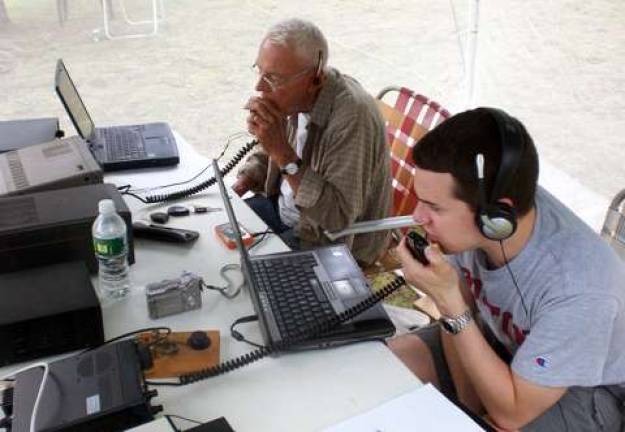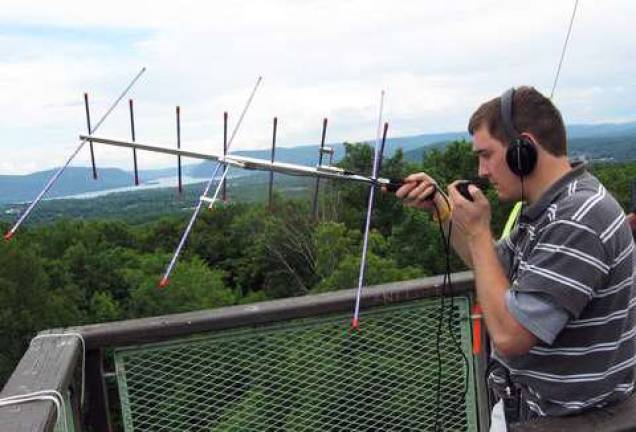Who ya gonna call when disaster strikes?


NEWBURGH Despite the Internet, cell phones, e-mail and modern communications, every year whole regions find themselves in the dark.
Tornadoes, fires, storms, ice and even the occasional cutting of fiber optic cables leave people without the means to communicate.
In these cases, the one consistent service that has never failed has been amateur radio. These radio operators, often called hams, provide backup communications for everything from the American Red Cross to FEMA and even for the International Space Station.
Orange County hams will join with thousands of other Amateur Radio operators showing their emergency capabilities on the weekend of June 23-24.
Over the past year, the news has been full of reports of ham radio operators providing critical communications during unexpected emergencies in towns across America including the California wildfires, winter storms, tornadoes and other events world-wide.
When trouble is brewing, amateur radios people are often the first to provide rescuers with critical information and communications.
On the weekend of June 23-24, the public will have a chance to meet and talk with Orange County ham radio operators and see for themselves what the Amateur Radio Service is about, as hams across the country will be holding public demonstrations of emergency communications abilities.
This annual event, called Field Day, is the climax of the week long Amateur Radio Week sponsored by the ARRL, the national association for Amateur Radio. Using only emergency power supplies including solar power and generators, ham operators will construct emergency stations in parks, shopping malls, schools and backyards around the country.
Their slogan, When all else fails, ham radio works is more than just words to the hams as they prove they can send messages in many forms without the use of phone systems, internet, or any other infrastructure that can be compromised in a crisis.
More than 35,000 amateur radio operators across the United States and Canada participated in last years event.
The fastest way to turn a crisis into a total disaster is to lose communications, said Allen Pitts of the ARRL. From the earthquake and tsunami in Japan to tornadoes in Missouri, ham radio provided the most reliable communication networks in the first critical hours of the events. Because ham radios are not dependent on the Internet, cell towers or other infrastructure, they work when nothing else is available. We need nothing between us but air.